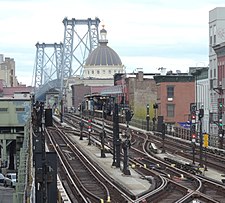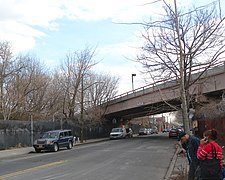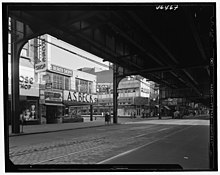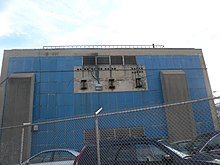BMT Jamaica Line
| BMT Jamaica Line | |||||||||||||||||||||||||||||||||||||||||||||||||||||||||||||||||||||||||||||||||||||||||||||||||||||||||||||||||||||||||||||||||||||||||||||||||||||||||||||||||||||||||||||||||||||||||||||||||||||||||||||||||||||||||||||||||||||||||||||||||||||||||||||||||||||||||||||||||||||||||||||||||||||||||||||||||||||||||||||||||||||||||||||||||||||||||||||||||||||||||||
|---|---|---|---|---|---|---|---|---|---|---|---|---|---|---|---|---|---|---|---|---|---|---|---|---|---|---|---|---|---|---|---|---|---|---|---|---|---|---|---|---|---|---|---|---|---|---|---|---|---|---|---|---|---|---|---|---|---|---|---|---|---|---|---|---|---|---|---|---|---|---|---|---|---|---|---|---|---|---|---|---|---|---|---|---|---|---|---|---|---|---|---|---|---|---|---|---|---|---|---|---|---|---|---|---|---|---|---|---|---|---|---|---|---|---|---|---|---|---|---|---|---|---|---|---|---|---|---|---|---|---|---|---|---|---|---|---|---|---|---|---|---|---|---|---|---|---|---|---|---|---|---|---|---|---|---|---|---|---|---|---|---|---|---|---|---|---|---|---|---|---|---|---|---|---|---|---|---|---|---|---|---|---|---|---|---|---|---|---|---|---|---|---|---|---|---|---|---|---|---|---|---|---|---|---|---|---|---|---|---|---|---|---|---|---|---|---|---|---|---|---|---|---|---|---|---|---|---|---|---|---|---|---|---|---|---|---|---|---|---|---|---|---|---|---|---|---|---|---|---|---|---|---|---|---|---|---|---|---|---|---|---|---|---|---|---|---|---|---|---|---|---|---|---|---|---|---|---|---|---|---|---|---|---|---|---|---|---|---|---|---|---|---|---|---|---|---|---|---|---|---|---|---|---|---|---|---|---|---|---|---|---|---|---|---|---|---|---|---|---|---|---|---|---|---|---|---|---|---|---|---|---|---|---|---|---|---|---|---|---|---|---|---|---|---|---|---|---|---|---|---|---|---|---|---|---|---|---|---|---|---|---|---|---|
600V DC third rail | |||||||||||||||||||||||||||||||||||||||||||||||||||||||||||||||||||||||||||||||||||||||||||||||||||||||||||||||||||||||||||||||||||||||||||||||||||||||||||||||||||||||||||||||||||||||||||||||||||||||||||||||||||||||||||||||||||||||||||||||||||||||||||||||||||||||||||||||||||||||||||||||||||||||||||||||||||||||||||||||||||||||||||||||||||||||||||||||||||||||||||
| |||||||||||||||||||||||||||||||||||||||||||||||||||||||||||||||||||||||||||||||||||||||||||||||||||||||||||||||||||||||||||||||||||||||||||||||||||||||||||||||||||||||||||||||||||||||||||||||||||||||||||||||||||||||||||||||||||||||||||||||||||||||||||||||||||||||||||||||||||||||||||||||||||||||||||||||||||||||||||||||||||||||||||||||||||||||||||||||||||||||||||
The BMT Jamaica Line, also known as the Broadway - Brooklyn Line, is an elevated
The longest elevated line in the system, the Jamaica Line includes the oldest existing elevated structure in the system – the original 1885 line of the
The
Description


The Jamaica Line includes a variety of structures. The original BMT Jamaica Line started from
From Marcy Avenue to a point just before
Between Crescent Street station and Cypress Hills, the line runs on an "S-curve", turning north from
Four curves on the line, including the two on the Jamaica Avenue "S-curve", are among the 30 sharpest curves in the subway system. The curve west of Marcy Avenue has radii of 175 and 190 feet (53 and 58 m) for Manhattan- and Queens-bound trains, respectively. The curve from Broadway Junction to Alabama Avenue has a radius of 175 feet (53 m). The curve east of Crescent Street has radii of 175 and 180 feet (53 and 55 m) and the curve west of Cypress Hills has radii of 210 and 200 feet (64 and 61 m), both respectively for Manhattan- and Queens-bound trains.[5]: 55 As with other BMT Eastern Division lines, the Jamaica Line can only accommodate trains with eight 60-foot-long (18 m) or eight 67-foot-long (20 m) cars. Due to the narrow turning radiuses of the lines, 75-foot-long (23 m) cars (R44, R46, R68, R68A) could not be used on the Eastern Division.[5]: 57
History

The Union Elevated Railroad, leased to the
An extension of the Broadway Elevated east to
A connection to the
Joint service with the

By the time the
In 1986, the New York City Transit Authority launched a study to determine whether to close 79 stations on 11 routes, including the segment of the Jamaica Line east of Crescent Street, due to low ridership and high repair costs.[23][24] Numerous figures, including New York City Council member Carol Greitzer, criticized the plans.[24][25]
Eastern Jamaica Line third track proposals
On July 7, 1934, the Transit Commission ordered that the BMT construct a transformer in Woodhaven at 77th Street, which would provide more power, and therefore it would allow the construction of a third track on the Jamaica El.[26]
In 1958, the
On October 9, 1958, because of a lack of funds and because of community opposition, the City Planning Commission removed the project from the capital outlay budget.
On June 18, 1959, skip-stop service was implemented on the Jamaica El, with trains stopping at alternate stations between 168th Street and Eastern Parkway with the hope of enticing riders from the IND Queens Boulevard Line to use the new skip-stop service. If skip-stop service was a success, the Transit Authority would have shelved the triple-tracking project.[32]
The project, as it was planned in 1962, would have necessitated the condemnation of about 200 homes and would have cost $35 million. The only express stop between
The NYCTA once again requested for funds for the third-tracking of the Jamaica Line for its 1965–1966 fiscal year. This time the projected cost would have been reduced to $16.45 million.[33] In November 1967, William Ronan, chairman of the Metropolitan Commuter Transportation Authority, and later the chairman of the Metropolitan Transportation Authority, suggested that money from a transportation bond issue could have paid for the installment of the third track on the line.[34]
Service patterns
The following services use part or all of the BMT Jamaica Line:[35]
The line has had two major service patterns: the
Nomenclature
From its acquisition by the BRT to and beyond city ownership in 1940, the portion of the line from its western terminus to Cypress Hills was known as the Broadway El or the Broadway-Brooklyn Line, to distinguish from the underground Broadway-Manhattan Line. Beyond that point it was known as the Jamaica Avenue El or the Jamaica Line. Subsequent to city takeover, the dividing line between the Broadway and Jamaica Avenue Lines was often considered to be the more westerly station at Eastern Parkway, now known as Broadway Junction.
Since the discontinuance of separate Broadway-Brooklyn services, the entire line is now known as the Jamaica Line.
Station listing
| Station service legend | |
|---|---|
| Stops all times | |
| Stops all times except late nights | |
| Stops weekdays during the day | |
| Stops all times except rush hours in the peak direction | |
| Stops rush hours in the peak direction only | |
| Time period details | |
| Station is compliant with the Americans with Disabilities Act | |
| Station is compliant with the Americans with Disabilities Act in the indicated direction only | |
| Elevator access to mezzanine only | |
| Neighborhood (approximate) |
Station | Tracks | Services | Opened | Transfers and notes | |
|---|---|---|---|---|---|---|
| Queens | ||||||
| Jamaica | Demolished section of original line | |||||
| 168th Street | July 3, 1918[7] | Closed September 10, 1977,[36] replaced by Q49 bus. Bus abandoned December 11, 1988. | ||||
| 160th Street | July 3, 1918[7] | Closed September 10, 1977,[37] replaced by Q49 bus. Bus abandoned December 11, 1988. | ||||
| Sutphin Boulevard | July 3, 1918[7] | Closed September 10, 1977,[37] replaced by Q49 bus. Bus abandoned December 11, 1988. | ||||
| Queens Boulevard | July 3, 1918[7] | Closed April 15, 1985,[38] replaced by Q49 bus. Bus abandoned December 11, 1988. | ||||
| Metropolitan Avenue | July 3, 1918[7] | Closed April 15, 1985,[39] replaced by Q49 bus. Bus abandoned December 11, 1988. | ||||
| Begins as continuation of ) | ||||||
| Richmond Hill | 121st Street | all | July 3, 1918[7] | JFK Airport
| ||
| 111th Street | all | May 28, 1917[40] | ||||
| 104th Street | all | May 28, 1917[40] | Earlier 102nd Street | |||
| Woodhaven | Woodhaven Boulevard | all | May 28, 1917[40] | Q52/Q53 Select Bus Service Manhattan-bound trains will not stop here because of renovations until summer 2024. | ||
| 85th Street–Forest Parkway | all | May 28, 1917[40] | Earlier Forest Parkway | |||
| 75th Street–Elderts Lane | all | May 28, 1917[40] | Earlier Elderts Lane Manhattan-bound trains will not stop here because of renovations until summer 2024. | |||
| Brooklyn | ||||||
Cypress Hills
|
Cypress Hills | all | May 30, 1893[11] | |||
| Crescent Street | all | May 30, 1893[11] | ||||
| Norwood Avenue | all | May 30, 1893[11] | ||||
| Cleveland Street | all | May 30, 1893[11] | Earlier Cleveland Avenue | |||
| East New York | Van Siclen Avenue | all | December 3, 1885[41] | |||
| Alabama Avenue | all | September 5, 1885 | ||||
| Connecting tracks to East New York Yard
| ||||||
| Center express track begins (no regular service) | ||||||
| Merge to local tracks with connection from BMT Canarsie Line (no regular service) | ||||||
| Broadway Junction | all | June 14, 1885 | A L Connection to LIRR at East New York Earlier Manhattan Beach Crossing or Manhattan Junction or Eastern Parkway | |||
| Connecting track to East New York Yard
| ||||||
| Bedford–Stuyvesant/ Bushwick |
Chauncey Street | local | July 18, 1885[44] | |||
| Halsey Street | local | August 19, 1885[45] | ||||
| Gates Avenue | local | May 13, 1885[46] | ||||
| Kosciuszko Street | local | June 25, 1888[10] | B46 Select Bus Service
| |||
| Merge with BMT Myrtle Avenue Line (M | ||||||
| Myrtle Avenue | all | | June 25, 1888[10] | originally at Stuyvesant Avenue, moved for the Myrtle Avenue Elevated transfer by April 1889[47]
| ||
| Park Avenue | June 25, 1888[10] | Closed June 5, 1916 | ||||
| Williamsburg | Flushing Avenue | local | J
|
June 25, 1888[10] | B15 bus to JFK Int'l Airport | |
| Lorimer Street | local | J
|
June 25, 1888[10] | |||
| Hewes Street | local | J
|
June 25, 1888[10] | |||
| Crossovers to local tracks () | ||||||
| Marcy Avenue | local | | June 25, 1888[citation needed] | B44 SBS
| ||
| Center express track ends as stub within Marcy Ave station | ||||||
| Continues over ) | ||||||
| Williamsburg | Demolished section of original line | |||||
| Driggs Avenue | June 25, 1888[10] | Closed July 3, 1916[48] | ||||
| Broadway Ferry | July 14, 1888[13] | Closed July 3, 1916[48] | ||||
References
- ^ "Annual Subway Ridership (2018–2023)". Metropolitan Transportation Authority. 2023. Retrieved April 20, 2024.
- QJ.
- ^ OCLC 49777633 – via Google Books.
- ^ "City Transit Unit Seeks 141 Million: Funds for Buses and BMT Cars Included in Budget" (PDF). The New York Times. July 18, 1962. Retrieved October 2, 2015.
- ^ a b c "Broadway Junction Transportation Study: NYC Department of City Planning Final Report-November 2008" (PDF). nyc.gov. New York City Department of City Planning. November 2008. Archived from the original (PDF) on June 6, 2010. Retrieved October 27, 2015.
- ^ a b "Woodhavenites Fear Loss of Homes by El Improvement: Residents Clamor for Facts About City's Plan to Build El Structure Through Heart of Community; Official Statement Released by Transit Authority". The Leader–Observer. October 2, 1958. Retrieved July 27, 2016 – via Fulton History.
- ^ a b c d e f g h
- The New York Times, New Subway Line: Affords a Five-Cent Fare Between Manhattan and Jamaica, L.I., July 7, 1918, page 30
- "OPEN NEW SUBWAY TO REGULAR TRAFFIC; First Train on Seventh Avenue Line Carries Mayor and Other Officials ... New Extensions of Elevated Railroad Service ... Currents of Travel to Change". The New York TimesCompany. No. July 2, 1918. July 2, 1918. Retrieved April 23, 2015.
- "'L' Trains Now Run Through to Jamaica" (PDF). No. July 4, 1918. Leader Observer (Queens/Brooklyn, NY). July 4, 1918. Retrieved April 23, 2015.[permanent dead link]
- Report of the Public Service Commission for the First District of the State of New York, Volume 1. New York State Public Service Commission. January 10, 1919. pp. 61, 71, 285, 286. Retrieved April 23, 2015.
- New York Municipal Railway Corporation. 1915. Archived from the original(PDF) on March 4, 2016. Retrieved March 4, 2016.
- ^ "Annual Report of the Brooklyn Rapid Transit Co. for The Year Ending June 30, 1912" (PDF). bmt-lines.com. Brooklyn Rapid Transit Company. June 30, 1912. Archived from the original (PDF) on October 11, 2016. Retrieved March 4, 2016.
- ^ Brooklyn Daily Eagle. Brooklyn, NY. June 25, 1888. p. 6. Retrieved February 18, 2018.
- ^ Brooklyn Daily Eagle. Brooklyn, NY. May 30, 1893. p. 10. Retrieved February 18, 2018.
- Brooklyn Daily Eagle. Brooklyn, NY. July 20, 1888. p. 4. Retrieved February 18, 2018.
- ^ Brooklyn Daily Eagle. Brooklyn, NY. July 13, 1888. p. 1. Retrieved February 18, 2018.
- Brooklyn Daily Eagle. Brooklyn, NY. May 28, 1893. p. 16. Retrieved February 18, 2018.
- ^ Rogoff, Dave (April 1968). "Crescent Street Incline". New York Division Bulletin. Electric Railroaders' Association.
- ^ "Annual Report of the Brooklyn Rapid Transit Co. for The Year Ending June 30, 1918" (PDF). bmt-lines.com. Brooklyn Rapid Transit Company. Archived from the original (PDF) on October 10, 2016. Retrieved March 4, 2016.
- ^ ERA Headlights. Electric Railroaders Association. 1956.
- ^ New York (State). Transit Commission. (1930). Tenth Annual Report, 1930. Columbia University Libraries. Albany, N.Y. : J.B. Lyon Co.
- ISSN 0362-4331. Retrieved August 4, 2016.
- ^ Cunningham, Joseph; DeHart, Leonard O. (January 1, 1993). A History of the New York City Subway System. J. Schmidt, R. Giglio, and K. Lang.
- ^ Breslin, Rosemary (May 22, 1983). "After a Long Slide, Hope For Jamaica". NY Times. NY Times. Retrieved June 8, 2017.
- ^ "Google Maps".
- ^ Brooke, James (April 29, 1986). "Subway Aides to Weigh Cuts on 11 Routes". The New York Times. Retrieved January 25, 2024.
- ^ a b Gordy, Margaret (April 29, 1986). "MTA Studies Citywide Cuts in Subway Lines, Stations". Newsday. pp. 3, 27. Retrieved January 25, 2024.
- ^ Finder, Alan; Connelly, Mary (May 4, 1986). "The Region; On Shrinking The Subways". The New York Times. Retrieved January 25, 2024.
- ^ "Express 'L' Service to 168th Street Looms: Transformer Ordered at 77th Street: New Stream-Lined Cars Will Appear on Jamaica Line". The Press Service Page. July 7, 1934. Retrieved July 27, 2016 – via Fulton History.
- ^ a b c d "Third Tracking of Jamaica Avenue "L" Called a Disgrace: Grey Calls Proposal 'Unnecessary Unwarranted Renovation of Antiquated Elevated Structure'; City Planning Commission Has Repeatedly Turned Down the Plan". The Leader–Observer. August 16, 1962. Retrieved July 27, 2016 – via Fulton History.
- ^ "Is It For Real?". The Leader–Observer. October 16, 1958. Retrieved July 27, 2016 – via Fulton History.
- ^ "Lack of Funds Kills Unwanted El Project: City Planning Commission Removes Item From Next Year's Capital Budget; Local Residents Rejoice on Hearing Homes Will Not Be Taken". The Leader–Observer. October 9, 1958. Retrieved July 27, 2016 – via Fulton History.
- ^ Fitzergerald, Owen (July 15, 1959). "Cashmore Again Hits BMT Plan". New York World–Telegram. Retrieved July 27, 2016 – via Fulton History.
- ^ "Patterson Asks Third Track El Construction: Personal Appearance Lends Weight to Bid Before Commission". The Leader–Observer. August 20, 1959. Retrieved July 27, 2016 – via Fulton History.
- ^ "BMT 3rd Track Plan May Be Abandoned". New York World Telegram and Sun. August 26, 1959. Retrieved July 27, 2016 – via Fulton History.
- ISSN 0362-4331. Retrieved October 7, 2016.
- ISSN 0362-4331. Retrieved October 7, 2016.
- ^ "Subway Service Guide" (PDF). Metropolitan Transportation Authority. September 2019. Retrieved September 22, 2019.
- ^ Dembart, Lee (September 9, 1977). "A Sentimental Journey on the BMT..." (PDF). The New York Times. Retrieved July 2, 2015.
- ^ a b Lee Dembart, The New York Times, A Sentimental Journey on the BMT, September 9, 1977, page 61
- ^ "www.nycsubway.org".
- ^ "www.nycsubway.org".
- ^ a b c d e
- "TO OPEN JAMAICA AV. LINE.; Nearly Two and a Half Miles Ready for Operation Tonight". The New York TimesCompany. No. May 27, 1917. May 27, 1917. p. 24. Retrieved April 21, 2015.
- "Jamaica Avenue 'L' is an Old Story Already" (PDF). No. May 31, 1917. Leader Observer (Queens/Brooklyn, NY). May 31, 1917. p. 1. Retrieved April 20, 2015.[permanent dead link]
- Report of the Public Service Commission for the First District of the State of New York, Volume 1. New York State Public Service Commission. January 15, 1918. pp. 73, 81, 312–314. Retrieved April 20, 2015.
- Brooklyn Daily Eagle. Brooklyn, NY. December 3, 1885. p. 4.
- Brooklyn Daily Eagle. Brooklyn, NY. September 5, 1885. p. 6. Retrieved February 18, 2018.
- Brooklyn Daily Eagle. Brooklyn, NY. June 13, 1885. p. 6. Retrieved February 18, 2018.
- Brooklyn Daily Eagle. Brooklyn, NY. July 18, 1885. p. 4. Retrieved February 18, 2018.
- Brooklyn Daily Eagle. Brooklyn, NY. August 19, 1885. p. 4. Retrieved February 18, 2018.
- Brooklyn Daily Eagle. Brooklyn, NY. May 13, 1885. p. 1. Retrieved February 18, 2018.
- ^ "Brooklyn Daily Eagle: It Reaches Broadway (April 5, 1889)". bklyn.newspapers.com.
- ^ a b BMT Lines: Brooklyn Manhattan Transit: A History as Seen Through the Company's Maps, Guides and other Documents: 1923-1939," by James Poulous
External links
 Media related to BMT Jamaica Line at Wikimedia Commons
Media related to BMT Jamaica Line at Wikimedia Commons
